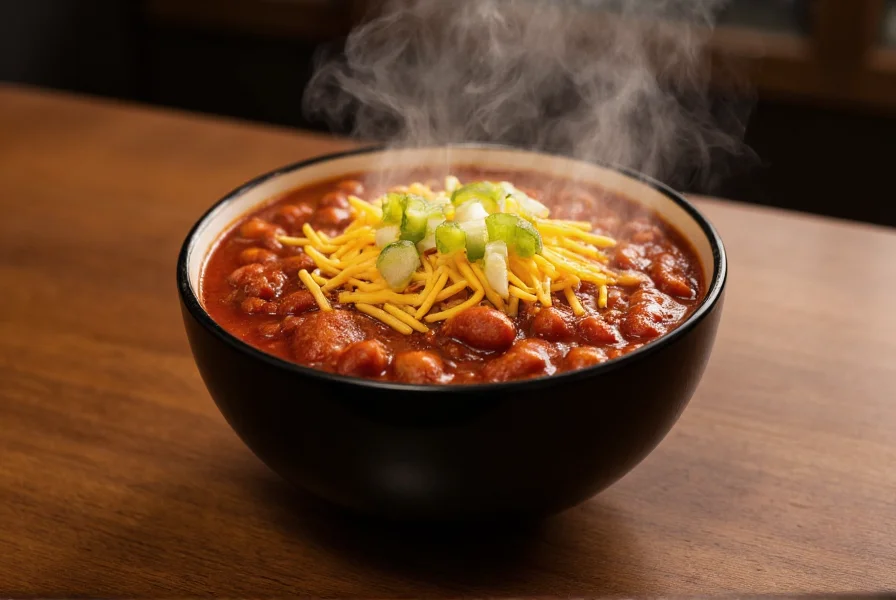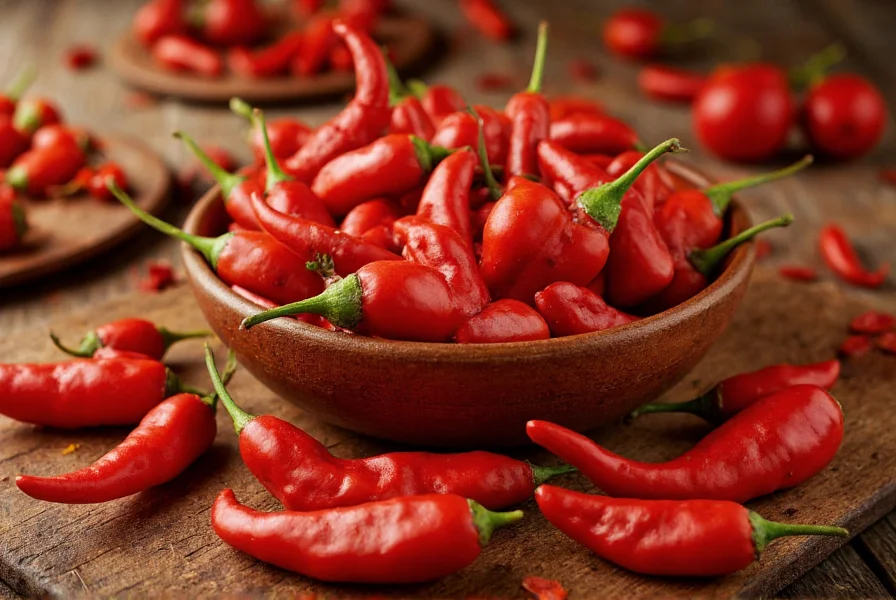When searching for "chilis chili," many home cooks seek to recreate the popular restaurant dish from Chili's Grill & Bar. This guide explores what makes their beef chili distinctive while providing practical techniques for achieving similar results in your kitchen without violating proprietary recipes.
Understanding Chili's Restaurant Chili
Chili's introduced their signature beef chili early in the restaurant chain's history, establishing it as a menu staple since the 1980s. Unlike traditional Texas-style chili, which contains no beans, Chili's version incorporates kidney beans for texture and heartiness. The restaurant's chili features a medium-bodied consistency that's neither too thin nor overly thick—a quality difficult to replicate at home without understanding proper ingredient ratios and cooking techniques.
Food scientists analyzing restaurant-style chili note that commercial operations like Chili's use specific processing methods that home kitchens can approximate. The distinctive flavor profile comes from a combination of factors: the quality of meat used, the specific blend of dried spices, the cooking temperature profile, and the incorporation of tomato products at precise stages of preparation.
Key Characteristics of Restaurant-Style Chili
Professional kitchens achieve consistent chili results through controlled variables that home cooks can adapt:
- Meat selection: Restaurant chili typically uses a specific grind of beef (usually 80/20 fat-to-lean ratio) for optimal flavor and texture
- Spice integration: Commercial operations often use pre-blended spice mixes added at specific cooking stages
- Tomato balance: The ratio of tomato paste to diced tomatoes creates the distinctive base
- Cooking duration: Extended simmering times (typically 2+ hours) develop complex flavors
Creating Homemade Alternatives to Chili's Style
While exact recipe replication isn't possible or advisable, home cooks can achieve satisfying results by focusing on technique rather than chasing proprietary formulas. The most successful "copycat" approaches emphasize proper foundational methods:
Begin with quality ingredients—freshly ground beef (80/20), real kidney beans (not canned if possible), and premium spices. Toasting whole spices before grinding releases essential oils that mimic the depth found in restaurant preparations. The "chilis chili flavor profile" enthusiasts seek comes primarily from proper layering of flavors through technique, not secret ingredients.
For those wondering how to make Chili's style chili at home, focus on these critical steps:
- Brown meat properly in batches to avoid steaming
- Add spices to hot meat to bloom flavors in fat
- Incorporate tomato paste before liquid ingredients
- Maintain gentle simmer (not boil) for 2-3 hours
- Add beans during the final hour of cooking
| Characteristic | Chili's Restaurant Chili | Well-Prepared Homemade Version |
|---|---|---|
| Texture | Medium thickness, consistent | Can achieve similar consistency with proper reduction |
| Heat Level | Moderate (2-3 on 10 scale) | Adjustable to personal preference |
| Preparation Time | Minutes (pre-made base) | 2-3 hours for optimal flavor development |
| Nutritional Profile | Higher sodium, consistent portion | Customizable sodium, portion control |
Nutritional Considerations for Chili Enthusiasts
Those researching Chili's chili nutritional information should know that restaurant versions typically contain higher sodium levels (approximately 1,200-1,500mg per serving) compared to carefully prepared homemade alternatives. By controlling ingredients, home cooks can reduce sodium by 30-50% while maintaining satisfying flavor through proper seasoning techniques.
The protein content remains similar (20-25g per serving), but homemade versions allow for healthier fat profiles by selecting leaner meats and controlling added fats. Understanding these differences helps those seeking healthier alternatives to restaurant chili make informed decisions without sacrificing enjoyment.

Practical Tips for Authentic Flavor Development
Professional chefs emphasize that the secret to restaurant quality chili at home lies in flavor layering. Start by searing meat properly—this Maillard reaction creates complex flavor compounds commercial kitchens rely on. When adding spices to hot meat, allow 1-2 minutes of cooking time to release essential oils before adding liquids.
For those exploring how to make Chili's style chili without beans (mimicking their occasional bean-free specials), substitute additional meat and vegetables while adjusting liquid ratios. The distinctive sweetness in Chili's version comes from caramelized onions and possibly a touch of sugar in their spice blend—home cooks can achieve similar results with slow-cooked onions and a pinch of brown sugar.
Temperature control proves crucial—maintain a gentle simmer throughout cooking. Boiling breaks down proteins too aggressively, resulting in a watery texture that fails to capture the thick restaurant-style chili consistency enthusiasts seek.

Preserving Chili's Cultural Significance
Chili's popularization of bean-inclusive chili represents an important evolution in American food culture. While traditionalists argue true chili shouldn't contain beans, the restaurant's approach made the dish accessible to broader audiences. Understanding this context helps home cooks appreciate why certain flavor profiles resonate with so many diners.
When attempting to recreate Chili's famous beef chili flavor, remember that consistency matters as much as ingredients. Commercial kitchens achieve uniform results through standardized procedures—home cooks can develop their own reliable method through careful note-taking and incremental adjustments across multiple batches.
Conclusion: Mastering Your Own Signature Style
Rather than obsessing over exact replication of Chili's restaurant chili recipe, focus on developing your own signature style informed by professional techniques. The most satisfying homemade chili versions honor the spirit of the restaurant dish while incorporating personal preferences and healthier modifications. By understanding the principles behind restaurant-quality results, home cooks can create delicious chili that satisfies the craving without requiring a trip to the restaurant.
Frequently Asked Questions
Does Chili's use beans in their chili?
Yes, Chili's signature beef chili contains kidney beans. This distinguishes it from traditional Texas-style chili, which typically contains no beans. The inclusion of beans contributes to the distinctive texture and heartiness of their menu item.
How can I make chili taste more like restaurant versions at home?
To achieve restaurant-quality chili flavor, focus on proper meat browning, spice blooming in fat, extended simmering (2-3 hours), and layering ingredients at correct stages. Toasting whole spices before grinding and using quality tomato products significantly enhances depth of flavor.
What gives Chili's chili its distinctive flavor?
Chili's distinctive flavor comes from a proprietary spice blend, specific meat-to-fat ratio, balanced tomato base, and controlled cooking process. The combination of smokiness with subtle sweetness and medium heat level creates their recognizable profile, which home cooks can approximate through careful technique rather than exact ingredient replication.
Is Chili's chili considered spicy?
Chili's beef chili registers as moderately spicy on a 1-10 scale (approximately 2-3). It features noticeable heat without overwhelming the other flavor components. The restaurant offers customization options for those seeking milder or spicier versions by adjusting pepper quantities or adding hot sauce.
Can I make a healthier version of Chili's style chili at home?
Absolutely. Homemade versions allow control over sodium content (reducing by 30-50%), selection of leaner meats, and incorporation of additional vegetables. You can maintain rich flavor while creating a healthier alternative by using proper seasoning techniques and quality ingredients without compromising on taste.











 浙公网安备
33010002000092号
浙公网安备
33010002000092号 浙B2-20120091-4
浙B2-20120091-4